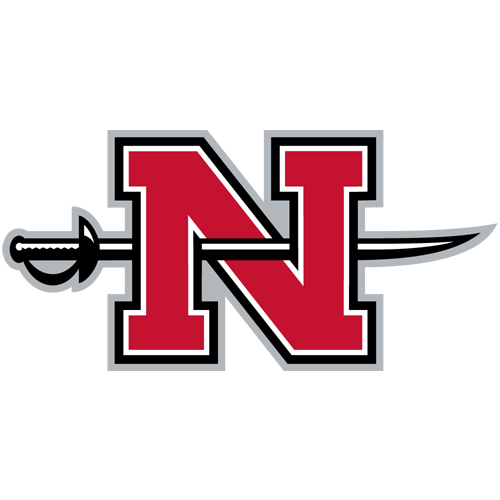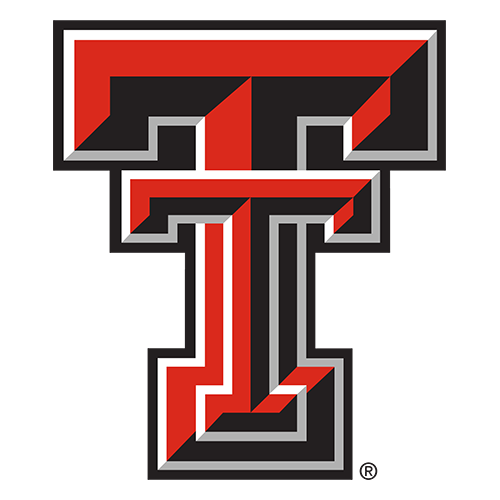




| HEIGHT | 5' 7 3/4" | CONE | -- |
| WEIGHT | 170 lbs | BROAD | 135" |
| 40 TIME | 4.32 | VERTICAL | 39" |
Austin may well be an exception as you project and transition him to the next level. Conventional thinking suggests that a 5'7 and 170-pound receiver does not have a significant role in the NFL, but Austin may break that paradigm with his combination of sudden explosiveness, pure speed, and surprising nuance to the details of the position. Austin was much more than a track athlete playing receiver, with his ability to defeat press coverage and his understanding of how to use his vertical stem to attack and challenge corners. What was fascinating studying Austin's tape was that he was predominantly an outside receiver lining up to both to the field and the boundary, which you would normally not think would be the case given his size, yet he consistently won especially versus press coverage. This raises the question of deployment in the NFL, with the conventional response being that Austin is a slot receiver, but I believe he can be much more than that. He may never be a high-volume target in the NFL, but my sense is he can line up in multiple locations both outside and inside and be a dangerous weapon who can be a factor at all three levels, and that does not even include jet sweeps, which he will definitely run at the next level. The bottom line is Austin has more complete receiver traits than many would think given his size limitations, and that will translate effectively in today's NFL.

| HEIGHT | 6' 2 3/8" | CONE | 6.71 |
| WEIGHT | 200 lbs | BROAD | 132" |
| 40 TIME | 4.43 | VERTICAL | 39" |
Austin was, in many respects, a very frustrating watch and evaluation given his physical traits and his higher-level measurables at the Scouting Combine. There is no question he looks the part with his long, sleek frame, stride length, and straight-line speed, but Austin rarely played that way on his 2021 tape. 2021 was really Austin's first season playing (he played minimally in 2018 and 2020) and it clearly showed, especially through the first half of the season when he his route tempo was sluggish and he had little sense of how to attack and defeat press man coverage. Austin did improve in the second half of the season in those two areas, but it is tough to get a good read on his NFL future given that he did not run many routes versus man coverage, so you did not see separation-and-win traits. The high percentage of his big plays came versus zone coverage or on vertical routes where outstanding throws and Austin's ball tracking ability predominated. My sense is Austin is a developmental project who may have a chance in a year or two as he better gets to understand what is demanded to be a quality WR in the NFL. His size and speed will get him drafted, but there is much work to do.

| HEIGHT | 6' 0 7/8" | CONE | 7.14 |
| WEIGHT | 212 lbs | BROAD | 118" |
| 40 TIME | 4.65 | VERTICAL | 33" |
There will not be a lot of mystery to Bell's projection and transition to the NFL. He is a good-sized, smooth and fluid receiver who was efficient and productive working the short and intermediate levels of the field and he will be the same kind of receiver at the next level Bell predominantly lined up outside in Purdue's offense but he has extensive experience lining up inside, and he can be a location versatile receiver in the NFL with all the traits needed to work effectively out of the slot. Bell's game is much more about detail and nuance than it is about high-level athleticism or explosiveness, and you can see from his tape that the process of route running and receiving is important to him and he has made himself into a technician and a natural receiver. He has the look of a professional receiver whose evaluation, and concurrently his volume at the next level, will be a function of coach/team and scheme, In some ways Bell reminded me of Van Jefferson coming out of Florida with his detailed route running and ability to be productive at the short and intermediate levels.

| HEIGHT | 6' 2" | CONE | 7.28 |
| WEIGHT | 225 lbs | BROAD | 122" |
| 40 TIME | 4.55 | VERTICAL | 33" |
Burks is a high-level prospect as you project and transition him to the NFL with an outstanding size/speed profile that can mismatch corners and the versatility to line up in multiple locations in the formation, including the backfield. Burks has the run-after-catch speed to take a tunnel screen to the house and the short-area burst and build-up speed to get on top of corners and stack them on vertical shots. Burks has excellent play speed which is only enhanced by his size and stride length, and he has big hands to snatch the ball out of the air on contested catches, both in the middle of the field and along the sideline. Burks possesses outstanding run-after-catch traits with his size, athleticism, and competitiveness and he will be the kind of receiver that teams look to get the ball to in space with room to run. Burks effectiveness on slant routes from both outside and the slot made me think of AJ Brown, but Burks is a bigger man with a bigger body. Burks is one of the best receiver prospects in this draft class. It will be interesting to see if teams see a little Deebo Samuel and Cordarrelle Patterson in the way Burks can be deployed with his formation versatility, his size, and his running traits.

| HEIGHT | 6' 2 5/8" | CONE | 7.28 |
| WEIGHT | 205 lbs | BROAD | 125 |
| 40 TIME | 4.62 | VERTICAL | 34" |
Dixon has a defined skill set and traits profile that will allow him to transition effectively to the NFL as a specific kind of receiver, but one that is almost always in demand. Dixon is a big body with natural hands and competitive toughness to work effectively in the middle of the field and consistently catch through contact. There will certainly be questions about his ability to separate and win versus quality NFL man-to-man coverage, and we know he lacks the top-end speed to be a true vertical dimension. But there was an efficiency, savvy, and competitiveness to Dixon's game that stood out on tape, and his ability to work between the numbers and make tough catches cannot be undervalued in the NFL. One thing that stood out watching Dixon's tape was he had a plan to defeat press man coverage and was consistently effective getting off the line of scrimmage without route disruption. There will be a significant jump in competition from the Southland Conference to the NFL, and that always creates some uncertainty when projecting a receiver, but the more I watched Dixon the more I believe he can make a successful transition to the NFL with the traits to work both outside and in the slot.

| HEIGHT | 5' 10 5/8" | CONE | 7.28 |
| WEIGHT | 178 lbs | BROAD | 121" |
| 40 TIME | 4.43 | VERTICAL | 36" |
Dotson is a strong prospect as you project and transition him to the NFL with his overall receiving profile: explosive traits/ability to be a factor at all three levels/location versatility to line up outside and the slot. I watched Dotson in both 2020 and 2021 and I felt he was more explosive vertically in 2021, with more accelerating speed to get on top of the defense. What consistently stood out with Dotson and what was particularly impressive given his 184-pound frame was his fearlessness working in the middle of the field, and that clearly reflected a mental toughness and competitiveness that cannot be taught and inculcated with coaching. The more I watched Dotson the more I liked his tape, and I believe he can be a multi-dimensional receiver in the NFL lining up both outside and inside and being a factor at all three levels. In many ways he reminded me of Diontae Johnson (Johnson measured in at 510 and 183 pounds and ran a 4.53 40 yard dash at the Scouting Combine and was drafted in the 3rd round by the Steelers), but Dotson has much better and more consistent hands. I would not be at all surprised if Dotson was a top-40 pick and maybe a mid-to-late 1st round pick in the 2022 NFL Draft.

| HEIGHT | 6' 1 7/8" | CONE | -- |
| WEIGHT | 201 lbs | BROAD | -- |
| 40 TIME | -- | VERTICAL | -- |
Doubs presents a desirable combination of size and athleticism with an overall physical profile that positions him to transition well to the next level. He possesses a strong yet sleek frame with an explosive feel to his movement, and his college tape strongly suggests that he can develop into a effective three-level receiver in the NFL. There was an explosive dimension to Doubs' game both as a route runner and run-after-catch, and he showed both stride length with his 6'2 frame and build up speed with free access to get on top of corners on vertical routes. Doubs is a strong prospect with his extensive experience lining up both inside and outside, including boundary X, and his ability to work both between the numbers and outside the numbers will help him make the transition to the next level more quickly. In 2021 at Nevada, Doubs played primarily versus zone coverage so his ability to win and separate versus quality NFL man-to-man coverage is a projection based on his physical traits/skill set and capacity to learn and apply coaching. Teams will see that differently based on their due diligence. Overall, there is a twitched-up, dynamic feel to his play and, along with his size and length, I believe Doubs has a chance to be a higher-level NFL WR with volume and production. Can a comparison be made to Davante Adams when he came out of Fresno State given their similar size and movement traits? Keep in mind Adams did not have immediate high-level success in the NFL.

| HEIGHT | 6' 0 7/8" | CONE | -- |
| WEIGHT | 215 lbs | BROAD | 122" |
| 40 TIME | 4.65 | VERTICAL | 34" |
Drummond is an interesting evaluation given his size/strength/hands/run-after-catch profile and the multiple ways in which he was used in the Ole Miss passing game. He is a good-sized, solidly built receiver with a strong body who was primarily featured out of the slot on in-breaking routes (slant and glance routes), including RPO and bang play action concepts where he could use his size and strong hands to his advantage. He also was location versatile in the Ole Miss offense, including lining up in the backfield and being deployed in different motion concepts. Drummond profiles best as a movement route runner where he can generate build-up speed with his powerful body, and that's why in-breaking routes like slants, glance, and crossers (both shallow and intermediate) are deployed to allow him to use his run-after-catch traits. Off of that, vertical routes like goes and corners and double moves like sluggo play to his receiving strengths. The more tape I watched of Drummond the more I liked what he could do as a bigger body short-to-intermediate receiver with strong hands and plus run-after-catch with the ability to be schemed, at times, on more vertical routes. In an NFL with more quick game concepts and more RPO concepts and more condensed formations, Drummond can be an important piece of a diverse passing game.

| HEIGHT | 6' 2 1/2" | CONE | -- |
| WEIGHT | 212 lbs | BROAD | -- |
| 40 TIME | -- | VERTICAL | -- |
There is no mystery to Emezie's game and what his projection and transition to the NFL could be. He is a big-bodied physical receiver with good body control and strong hands, which allowed him to make tough contested catches. Emezie consistently made catches outside his frame, and while he does not possess the accelerating long speed to run by and get on top of corners, he showed excellent ball-tracking skills on vertical throws and was able to make competitive catches. The overriding question with Emezie is whether he can line up on the outside (which he did almost exclusively at North Carolina State) and separate and win versus quality NFL man-to-man coverage. A detailed evaluation of his 2021 tape would strongly suggest that could be an issue, since he lacks the needed quickness and short-area burst to get in-and-out of breaks in the manner demanded at the next level/ Emezie's receiving profile is one of size/length/body control/ball skills and there is a place for that in the NFL: can he develop into a Byron Pringle type of receiver? His ability to transition effectively becomes a function of team, scheme, and development.

| HEIGHT | 6' 1 7/8" | CONE | -- |
| WEIGHT | 209 lbs | BROAD | 128" |
| 40 TIME | -- | VERTICAL | 36 1/2" |
Ezukanma is a good-sized receiver with location versatility and a smooth, fluid feel to his movement as you project and transition him to the next level. What stood out was how he was used in the Texas Tech offense, lining up outside, in the slot, and in multiple backfield alignments, raising the question of whether he can be deployed in similar ways to Deebo Samuel and Cordarrelle Patterson in the NFL (I am talking about usage, not suggesting he is the same quality player). It was evident watching his tape that Texas Tech wanted to get him the ball on the move in space to play to his higher level run-after-catch trai, s where he looked like a running back with his competitiveness, elusiveness, and outstanding contact balance to gain tough yards after initial contact. While Ezukanma is not a true vertical dimension in that he will run by and get on top of corners, his combination of stride length, body control, and strong hands at the catch point allowed him to make tough, contested catches down the field. Ezukanma is an intriguing receiver prospect with his ability to line up all over the formation and his run-after-catch ability, and those traits have become more and more in demand in the NFL. He will find a place in the league, and with his size and ability to make tough catches, he could develop into a quality receiver depending on team and QB.

| HEIGHT | 5' 11 7/8" | CONE | -- |
| WEIGHT | 186 lbs | BROAD | 126" |
| 40 TIME | 4.33 | VERTICAL | 34" |
Gray is one of those receivers, and there are many, who will find a place in the NFL and his development and resulting snaps and volume will be a function of team and coaching and scheme. Gray possesses one trait that is always in demand: the speed to create explosive plays both on vertical routes and run-after-catch. Gray has a track background and while he is not a highly refined route runner, he is much more than a track athlete playing receiver/ Gray enters the NFL as a receiver who can be a factor at all three levels of the defense in addition to being a weapon in the tunnel screen game and on jet sweeps to take advantage of his speed. Gray must continue to work on his hands, with too many drops on routine catches (especially early in the 2021 season). He must also work on his release versus press coverage and his route running (he needs more detail and nuance and not just rely on his speed), but there is much to work with as he transitions to the next level. While Gray played significant snaps at boundary X at SMU, my sense is he will project as a movement Z and slot receiver in the NFL to maximize free access and give him more field to work with.

| HEIGHT | 5' 10 1/2" | CONE | -- |
| WEIGHT | 183 lbs | BROAD | -- |
| 40 TIME | -- | VERTICAL | -- |
Johnson lined up almost exclusively in the slot in Tulsa's offense in 2021, and that is likely how he will project and transition to the NFL. He is a smooth and fluid route runner with natural quickness and easy movement, with the short=area burst and acceleration to snap in-and-out of breaks cleanly and create separation at the top of his route stem. Johnson played faster than his 4.62 40-yard dash time at his Pro Day, although there is no question that he is more quick than straight-line fast. And while he did the large percentage of his work in the short to intermediate areas in the Tulsa offense, he did show enough route and play speed to get on top of the coverage at times, with an excellent feel for doble moves like sluggo. There was an easy smoothness to Johnson's movement and route running that will transition effectively to the NFL, and it would not surprise me at all if he found a place as a slot receiver. The main question with Johnson will be how he handles the increased physicality he will face in the NFL, given that he did not see much press coverage at all at Tulsa and the free access into his routes accentuated his fluidity and route crispness.

| HEIGHT | 5' 11 3/4" | CONE | -- |
| WEIGHT | 204 lbs | BROAD | 121" |
| 40 TIME | 4.31 | VERTICAL | 33" |
Jones is a space receiver, needing room to catch the ball and then use his outstanding run-after-catch traits, and that was the reason Tennessee featured him in the tunnel screen game and the quick game out of the slot. Jones has the short-area quickness and separation quickness to develop into an efficient route runner from the slot, but he would need to learn all the subtleties, nuances, and variables demanded of slot receivers at the NFL level. My sense is Jones could be deployed as a motion-movement receiver in an offense that features a good percentage of motion, giving him free access into routes to maximize his movement ability in space and his run-after-catch ability. While Jones was not used much as a vertical receiver in Tennessee's offense, he does have the kind of quickness and burst and acceleration that would allow him to work seams, fades, and wheels from the slot. The more I watched Jones, the more I liked his game, transitioning effectively to the NFL where the quick game and the motion-movement receiver are increasingly bigger factors.

| HEIGHT | 6' 3 7/8" | CONE | -- |
| WEIGHT | 219 lbs | BROAD | -- |
| 40 TIME | -- | VERTICAL | -- |
London enters the NFL with extensive experience playing both outside and the slot, and his location versatility will be a positive for the long, athletic savvy WR. London is a size and length and hands receiver with smooth, fluid movement and an understanding of how to position his body to create just enough space to catch the ball. What stood out in almost every game was London's body control and hands to work outside the numbers from both boundary X and #1 to twins/trips and make tough contested catches versus tight coverage, with the question being whether that can translate with the same efficiency at the next level and with the same consistency. My sense is that is an open question that different evaluators and coaches will answer differently (you have to have some concern about so many contested catches versus college corners). London is a smooth, savvy receiver with an excellent feel for creating space versus off man coverage and finding voids in zone coverage, but there will be questions as to his separation quickness at the top of his route stem versus quality NFL man-to-man coverage (although separation quickness is different for long receivers than it is for shorter receivers). London's ability to make tough, contested catches cannot be discounted (that's a strong trait) so the question as teams project and transition him to the NFL is whether he can thrive as a boundary X, or is he better suited as a movement Z or slot receiver where he can get free access off the ball? London will be a polarizing evaluation and I feel he would transition best as a big slot in the way Marques Colston was in New Orleans.

| HEIGHT | 5' 11" | CONE | 6.98 |
| WEIGHT | 189 lbs | BROAD | 121" |
| 40 TIME | 4.34 | VERTICAL | 38" |
Melton was a bit of an enigma as I watched his 2021 tape and kept thinking about his projection and transition to the next level. He predominantly was an outside receiver in Rutgers' offense with a more limited number of snaps in the slot, yet my sense is NFL teams will not see Melton as an outside receiver as he transitions, but rather see him as a slot receiver prospect where his lack of play strength and the fact that he looks and plays smaller than his 5'11 height would not be as much of factor. There will still be questions about Melton's ability to be an effective slot receiver given that he is more straight-line linear and a little tight-hipped, so he is not a quick-twitch, sudden, shifty route runner who can transition and change direction effortlessly, but more of a slot-fade, shallow-and-intermediate crosser slot receiver (and there were some strong slot fade receptions on Melton's 2021 tape with outstanding body control and hands). There is no singular defining feature of Melton's game, and the question is if his game can grow and develop with coaching and experience to the point where he can become a solid slot. My sense is that could take some time, and it may not happen at all, with Melton perhaps relegated to being a #4 or #5 receiver on an NFL roster.

| HEIGHT | 5' 11 1/4" | CONE | -- |
| WEIGHT | 187 lbs | BROAD | -- |
| 40 TIME | -- | VERTICAL | -- |
Metchie has the look of an NFL WR based on his 2020 and 2021 tape, and assuming a full recovery from a torn ACL, he is a strong projection to the next level. Metchie at his core is a route technician with a great feel for the pace and tempo of different routes. He shows a detailed and refined understanding of how to set up corners in off coverage, plus how to find voids in zone coverage. At a young age, he has a subtlety and polish to his route running that you do not often see in college receivers, but Metchie's game is built on that. And while he is not purely explosive, he has shown that he can be a three-level dimension based on his understanding of how to attack corners. Metchie can transition to the NFL as an inside/outside receiver who can run multiple routes (which he did at Alabama) and be used as a motion receiver in the Z or slot position. He has excellent route and separation quickness and play speed, and he showed he could win from outside and from the slot to twins and #3 to trips. Consistent in his movements with an understanding of how to set up and attack press coverage and well-schooled in an NFL route tree, I thought there was a lot of Robert Woods to Metchie's game. I liked Metchie's tape in both 2020 and 2021 and I believe he will be a quality NFL WR and his volume and production will be a function of team and scheme.

| HEIGHT | 5' 9 5/8" | CONE | 7.13 |
| WEIGHT | 195 lbs | BROAD | 125" |
| 40 TIME | 4.41 | VERTICAL | 34 1/2" |
Moore will be somewhat polarizing in NFL draft rooms because of how he achieved his high level production at Western Michigan. He was used both as an outside and slot receiver but was extremely limited in the routes he was asked to run in a very basic college passing game. Moore likely best profiles as a predominant slot receiver as you project and transition him to the NFL, even though he played significant snaps outside, with 43 of his 95 catches in 2021 coming when he was aligned at #1. He lacks length but has a strong, compact frame and he showed the physical and competitive toughness to work effectively inside on slants and glance routes with strong run-after-catch traits. My sense is some will see him as location versatile given his college experience and his ability to work the short game effectively from both outside and inside, but I believe he will likely see most of his snaps inside, with jet sweeps being part of his resume at the next level. Moore made vertical catches at boundary X at Western Michigan, and in today's NFL with such an emphasis on formation versatility, he could certainly see meaningful snaps at #1. But I think he will be most effective and best deployed out of the slot in 11 personnel groupings.

| HEIGHT | 5' 11 1/4" | CONE | 7.03 |
| WEIGHT | 186 lbs | BROAD | 128" |
| 40 TIME | 4.5 | VERTICAL | 38" |
Nailor presents the vertical dimension that is always in demand in the NFL, and that makes him a valuable piece of an NFL offense depending on the makeup and personnel of an offense. Nailor played faster than his timed 40-yard dash, and his 2021 tape showed the burst and acceleration to run by and get on top of corners with an understanding of how to stack corners and the tracking ability to make tough catches. What stood out with Nailor was he, at times, showed some route running refinement in terms of using his vertical stem to attack the leverage of corners and get them off their spot. Nailor is a specific kind of receiver, with his game predominantly built on playing in space on the outside where he was featured on vertical routes and double-move concepts that got him over the top of corners for explosive plays. Nailor, with his acceleration and speed, also gives an offense the jet sweep and bubble/tunnel screen game, with the objective to get him the ball on the move. My sense is Nailor will find a place in the NFL in an offense that has more complete receivers out of 11 personnel, where he can be utilized as a vertical dimension to help dictate and define coverage. It will likely take some time for Nailor to acclimate to the NFL since his game is built more on finesse than physicality, and those kind of receivers need to get more comfortable with the far different style of play.

| HEIGHT | 6' 0 3/8" | CONE | -- |
| WEIGHT | 187 lbs | BROAD | 124" |
| 40 TIME | 4.39 | VERTICAL | 32" |
Olave came back to Ohio State for his senior season and he again exhibited the skill set and traits that were evident in his 2020 tape. Olave is a smooth, fluid route technician who is at his best working with free access off the ball, allowing him to use his vertical stem to set up and move corners off their spot. He has excellent route quickness and a good feel for the pace and tempo of routes, and that results in Olave working in space and making the effective quick speed cuts that define his game. There will be questions about Olave's competitive toughness and his ability to make tough catches in the middle of the field, with the concurrent ability to catch through contact. Those are legitimate questions based on his tape. Another question will be whether Olave will be seen as a vertical receiver as he transitions to the NFL, and I'm not certain that he will be, although his route running nuance and stride length will get him on top of corners at times. Run-after-catch is another concern, with the tape not showing much of that trait at all. My sense is Olave would transition most effectively to the NFL as a Z receiver/slot receiver with the ability to be used in motion to allow him free access into routes and maximize his fluidity and stride length, although I believe many will see him lining up outside as well. Olave is efficient and consistent, but at this point he best projects to the NFL as a smooth complementary receiver in a well-schemed passing game that gets him in space.

| HEIGHT | 5' 11 1/4" | CONE | -- |
| WEIGHT | 189 lbs | BROAD | 124" |
| 40 TIME | 4.58 | VERTICAL | 33 1/2" |
Philips has the look and feel of a refined NFL slot receiver as you project and transition him to the next level. He is a polished, nuanced route runner with an innate feel for setting up corners before his break, getting them off their spot and then creating separation with quick, decisive cuts. While Philips' timed speed does not suggest he will be a vertical dimension, his 2021 tape showed that he was a three-level receiver who could win over the top based on his route-running detail and his burst and acceleration. Philips consistently showed a great feel for attacking the leverage and positioning of off-coverage corners and safeties, using a combination of body fakes and head feints to create space for his cuts. While Philips can line up outside, my sense is he will be seen by NFL coaches as a slot receiver, and it would not surprise me at all if he played significant snaps as a rookie with a meaningful target share. He has the look of a professional slot receiver, and he is advanced and refined in the details of the position, with higher-level traits. Philips will step into the NFL and be a factor right away. He may not be Cooper Kupp as a rookie (Kupp is a bigger man, and that's a significant difference) but Philips will fill the same role.

| HEIGHT | 6' 3 1/4" | CONE | -- |
| WEIGHT | 195 lbs | BROAD | 125" |
| 40 TIME | 4.47 | VERTICAL | 33" |
This is what I typed after watching all of Pickens in 2019 and 2020: "Pickens' 2020 tape was impressive and showed a high-level receiver prospect with all the traits you look for in an NFL WR. His size/length/speed/hands/contested catch profile is what you want in an NFL WR, especially one who projects as a boundary X. Some might argue that Pickens did not run a complete route tree at Georgia, but I have never believed in that limitation when transitioning and projecting a high-level traits WR to the next level. Pickens is long and smooth and competitive, with the speed and stride length to run by corners and excellent contested catch ability and run-after-catch traits." Pickens fits the profile of an NFL boundary X receiver. He's explosive both off the ball and into his route stem. He eats space in a hurry with stride length and build-up speed. He ran by SEC corners. He has outstanding ball skills, making tough contested catches, both back-shoulder and over-the-top. He has a wide catching radius with excellent hands. In short, Pickens is one of the best WR prospects in the 2022 Draft.

| HEIGHT | 6' 3 1/8" | CONE | 7.13 |
| WEIGHT | 211 lbs | BROAD | 129" |
| 40 TIME | 4.41 | VERTICAL | 40 1/2" |
Pierce is one of the more intriguing WR evaluations in the 2022 Draft given his overall measurables and his location versatility in Cincinnati's offense. He plays big, long, and fast with his stride length, body control, and hands to make contested catches on vertical throws and in the red zone. He showed a refined feel for separation quickness and burst at the top of his route stem. There was a powerful feel to his movement, and he was consistently strong defeating press coverage with his short area burst off the ball and his quickly accelerating speed getting on top of corners. Pierce was a vertical dimension at Cincinnati and it would not surprise me if he was able to do that in the NFL with his stride length/body control/physical competitiveness/hands profile. Pierce was not purely sudden or explosive, but he is an outstanding natural athlete with great hand-eye coordination with a wide catching radius and high-level competitiveness at the catch point. I believe Pierce can line up at boundary X in the NFL and also be a tough matchup in the inside slot to trips.

| HEIGHT | 6' 3 1/8" | CONE | -- |
| WEIGHT | 195 lbs | BROAD | 119" |
| 40 TIME | 4.59 | VERTICAL | 31" |
Some might immediately see Polk as a lesser prospect because he lacks speed and he played in Mike Leach's Air Raid offense, lining up almost exclusively on the outside on the right side of the formation which significantly limited the routes he ran. But Polk showed some detail and nuance as a route runner, and with his length, impressive body control, and ball skills, there is a lot to like as you project and transition him to the NFL. What consistently stood out with Polk was his route quickness and his feel for attacking leverage of corners, either freezing them or getting them off their spot. He did not face much man coverage at Mississippi State, so his ability to separate at the top of his route stem is an open question, but I believe with his route savvy and his short-area quickness to stop on a dime, he can win versus man coverage in the NFL. The more I watched Polk the more I liked him. It was evident he had an innate feel for route running and he consistently showed outstanding body control and hands. Polk ended up being one of my favorite receivers to watch.

| HEIGHT | 5' 8" | CONE | -- |
| WEIGHT | 178 lbs | BROAD | -- |
| 40 TIME | 4.44 | VERTICAL | 34 1/2" |
Robinson is one of the more fascinating receiver prospects in this draft given his size, but in today's NFL that is not as big a concern as it was years ago. At first glance, Robinson projects almost exclusively as a slot receiver, and that will likely be the case. But in a league where manufactured schemed touches have become significant parts of may offenses, Robinson will be much more than a stationary slot. He may lack true breakaway home run speed, but Robinson is a sudden, agile, dynamic mover who can win and create explosive plays in multiple ways, whether he is working out of the slot with free access on intermediate and vertical routes or using his short-area burst to gain vertical separation on slot fades and go routes He is also adept running option routes or creating run-after-catch on tunnel and bubble screens. Robinson brings an explosive element to an offense with his outstanding overall quickness and three-level dimension as a route runner, plus his run-after-catch vision and agility to make defenders miss. Despite his size, Robinson is a playmaking receiver who brings tremendous versatility to an offense, and he will be a factor at the next level. It would not surprise me if, depending on team and scheme, he develops into a volume target.

| HEIGHT | 5' 11 7/8" | CONE | 7.28 |
| WEIGHT | 196 lbs | BROAD | 124" |
| 40 TIME | 4.43 | VERTICAL | 34 1/2" |
70% of Shakir's receptions in 2021 came out of the slot, and my sense is most evaluators and coaches will see him predominantly as a slot receiver as he transitions to the NFL, with the versatility to line up in multiple locations within the formation. Shakir's game (which is fun to watch) is built on a strong profile of versatility, refined and detailed route running, separation quickness, outstanding body control and hands, run-after-catch, and high-level competitiveness. Shakir worked effectively both outside the numbers and in the middle of the field, and he will be able to do that in the NFL with his sudden quickness, ability to snap out of his breaks with explosion, plus his competitive toughness. The more tape I watched of Shakir, the more his body control and hands stood out, with each game seemingly showing an outstanding catch that did not seem possible. Shakir is an excellent prospect and my sense is he will transition to the next level fairly seamlessly with his traits profile, position versatility, and intense competitiveness. He could well be a contributor in the passing game as a rookie in 11 personnel groupings.

| HEIGHT | 5' 7 3/8" | CONE | -- |
| WEIGHT | 183 lbs | BROAD | -- |
| 40 TIME | -- | VERTICAL | -- |
Sterns projection and transition to the NFL will be straightforward as a slot receiver, given his 5'7 size and lack of explosive sudden movement traits to work on the outside versus NFL corners. Sterns predominantly had free access working out of the slot in Western Kentucky's pass game and was able to set up his breaks on his short and intermediate routes without any disruption through the route stem, and that allowed his route quickness and to be maximized. Sterns at his best is a short (maybe intermediate) receiver who can work effectively in a 5-12 yard area and create some separation versus man-to-man coverage, but his lack of short-area burst and explosiveness will always be a limitation as he transitions to the NFL.

| HEIGHT | 6' 2 3/8" | CONE | -- |
| WEIGHT | 181 lbs | BROAD | 130" |
| 40 TIME | 4.28 | VERTICAL | 36 1/2" |
Thornton is one of the more intriguing WR prospects in the 2022 Draft, with his length and speed profile in a rail-thin frame. He may be the most vertically explosive receiver in the class, and his track speed consistently showed up on tape, getting on top of and running by corners. Thornton lined up almost exclusively on the outside in Baylor's offense, including significant snaps at boundary X, and he will likely project to the next level as an outside-the-numbers vertical dimension who can also run slants and in-breakers versus off-coverage corners. Two things that consistently stood out with Thornton were his more refined ability to defeat press coverage and his competitive toughness and grit (a trait almost all south Florida receivers possess). Thornton will transition to the NFL as an outside complement who can provide a high-level vertical dimension, but my sense is with development and experience he could become a little bit more than that depending on team and scheme. There were many reps in which he showed some detail and nuance as a route runner, and with coaching at the next level and the speed with which he can threaten corners, he can develop into more of a complete receiver with an intermediate element to his game. Thornton will never be a true high-volume #1 target, but I believe he can be more than just a one-note vertical receiver.

| HEIGHT | 6' 1 1/8" | CONE | 7.08 |
| WEIGHT | 194 lbs | BROAD | 123" |
| 40 TIME | 4.49 | VERTICAL | 36" |
Tolbert is a good-sized, athletic finesse receiver with smooth, fluid movement who will likely be viewed as an outside receiver as teams project and transition him to the NFL. He has a size/length/three-level profile that is best maximized when he has free access off the LOS, where his build up speed and acceleration translates to explosiveness. He is smooth and fluid with more long acceleration than short-area separation quickness and he possesses excellent body control to make contested catches on vertical routes and in the red zone. Tolbert's skill set projects best as a movement receiver, running the kind of routes that have him running away from man coverage or through voids in zone coverage. Despite his size and length, Tolbert is not a physical receiver and there will be questions as to his ability to both defeat press coverage and work the middle of the field and make tough catches in traffic. Tolbert is a smooth strider with plus length and athleticism who will do his best work on the outside where he has more space to operate, and he will give an NFL offense a vertical dimension. Overall, Tolbert has the look and movement of an NFL WR.

| HEIGHT | 6' 0 7/8" | CONE | -- |
| WEIGHT | 191 lbs | BROAD | -- |
| 40 TIME | -- | VERTICAL | -- |
Toure has a specific traits profile that could well find a place in the NFL given his size and length and his smooth, fluid athleticism. Toure is long and lean, with an easy and gliding feel to his route running and overall movement, and his stride length and build-up play speed were defining features of his game, which is the reason he was at his best when he had free access off the line. The Nebraska coaching staff understood that about Toure, and that is why he was featured as their motion-movement receiver, in addition to lining up as the off-the-ball receiver in stacked alignments, which prevented him from being pressed. Toure lined up in multiple locations in Nebraska's offense, with more than half his targets coming out of the slot, which is where I believe most NFL teams would see him as a starting point, given his thin build and lack of desired play strength. Toure also lined up in the backfield, running motion screens and wheel routes, but his tape did not show the kind of run-after-catch traits that would likely lead him to being used that way at the next level. Toure was at his best as a smooth, gliding route runner running through zones on intermediate routes, and while he does not possess elite vertical speed -- being more of a one-speed receiver -- he did show the ability in college to get on top of the coverage, but that is a question in the NFL. Toure will get an opportunity as a slot movement receiver, with a chance to get snaps depending on team and passing game approach.

| HEIGHT | 6' 1 3/8" | CONE | 7.45 |
| WEIGHT | 184 lbs | BROAD | 113" |
| 40 TIME | 4.51 | VERTICAL | 30" |
Turner is an exception in the world of college football, having played four years at Virginia Tech, and my sense from film study is that he will find a place in the NFL as a third, fourth, or fifth receiver depending on the team and the other personnel at the receiver position. Turner is long, at more than 6'1 with a thinner frame, and that showed up on tape when he faced press coverage on the outside, with his releases being disrupted early in his route stem, necessitating the need to get stronger to transition effectively to the next level. Turner, with free access off the line, showed that he was a smooth and fluid route runner who understood how to use his vertical stem to attack the positioning and leverage of off coverage corners and get them off their spot so he could create separation, but he needs to clean up his steps and his breaks at the top of his route stem so they are quicker and less segmented. What Turner did show was very good hands and outstanding body control to make tough catches down the field, which he will have to make given that he lacks vertical juice to get on top of corners. Turner could well be one of those receivers who in a couple of years, with coaching and development, becomes a solid #3 but his overall traits do not likely go beyond that.

| HEIGHT | 6' 4" | CONE | -- |
| WEIGHT | 208 lbs | BROAD | 136" |
| 40 TIME | 4.36 | VERTICAL | 38 1/2" |
Watson will be seen as a fascinating prospect given his high-level size/speed profile, and that will get people very excited in the pre-draft process. He looks like a track athlete with his easy burst, acceleration, long fluid strides, and his consistent ability to effortlessly get on top of FCS corners and win vertically. It gets you wondering what he might be able to do at the next level: will that straight-line vertical speed and easy ability to run by the defense translate versus NFL corners? At this point, .Watson presents as a vertical dimension (and that is always in demand in the NFL) who will need much coaching and development, both catching the ball and with the details and nuances of route running. Watching Watson, I instinctively thought of Marquez Valdes-Scantling coming out of South Florida in 2018 (Valdes-Scantling's pre-draft measurables were 6'4 and 206, and he ran a 4.37 40-yard dash). At this point, as Watson enters the NFL, he would be a puzzle piece in an offense much like Valdes-Scantling is in Green Bay and Mecole Hardman is in Kansas City. Perhaps the more world-view question is whether teams will see him as a multi-positional weapon much in the way Cordarrelle Patterson was used in Atlanta and, to a lesser extent, the way Deebo Samuel was used in San Francisco. My sense is Watson can be developed into a multi-dimensional weapon and a more complete receiver and much of that development will be team and scheme dependent.

| HEIGHT | 6' 3 1/2" | CONE | -- |
| WEIGHT | 214 lbs | BROAD | 135" |
| 40 TIME | 4.42 | VERTICAL | 40" |
Weston is one of the most intriguing receiver prospects in the 2022 Draft, coming from an FCS school but featuring a premium size/speed and body/control hands profile. Weston has outstanding length at just under 6'4 and he consistently ran by FCS corners with his stride length and accelerating speed, in addition to making tough contested catches on poorly thrown balls. He also showed both the physicality and short area quickness and burst to defeat press coverage without any route disruption, and while that came against a lower level of college competition, you still saw the traits needed to accomplish the task. Weston lined up both outside and inside in Northern Iowa's offense, and that extensive location experience is a positive as you project and transition him to the NFL. I could easily see Weston at boundary X and the inside slot to trips in the NFL, with his size/contested catch ability a factor on the outside, and his stride length and accelerating speed a big matchup factor inside on seam and over routes. There will be a significant increase in talent and competition level that Weston will have to work through, and that will likely make him somewhat of a developmental prospect. But the traits are there to be a quality NFL WR who can provide a vertical dimension.

| HEIGHT | 6' 1 1/2" | CONE | -- |
| WEIGHT | 179 lbs | BROAD | -- |
| 40 TIME | -- | VERTICAL | -- |
Williams' 2021 season ended in the national championship game with a torn ACL, but his tape showed him to be the most explosive vertical receiver in college football, with the accelerating deep speed to get on top of and run away from corners consistently and the easy ability to track the ball. Williams possesses a natural quickness and explosiveness to his movement that was evident in his route quickness and his ability to separate on intermediate routes, in addition to his outstanding run-after-catch ability. While Williams' calling card was his vertical explosiveness, he also showed some detail and nuance to his route running, with an understanding of how to use his vertical stem to threaten corners and then snap off routes with needed separation. Williams lined up both outside and the slot in Alabama's offense, and my sense is he will be a multiple location receiver in the NFL, with the emphasis on getting him free access off the ball so he can maximize his speed and explosiveness. The question some will have will be his ability to make tough catches in traffic and make contested catches given his slighter frame and less-than-desired play strength. That's a question that will get to the heart of what Williams can be in the NFL: Is he a true #1, or is he more of the explosive complement? The bottom line is Williams is a big play waiting to happen, and those kinds of explosive traits are always in demand in the NFL. Williams was a fun player to evaluate, and if his knee checks out well he will be a first-round pick. There are not many receivers with his flat-out vertical speed and big-play ability, and that makes him an impact receiver and game-changer.

| HEIGHT | 5' 11 3/4" | CONE | -- |
| WEIGHT | 183 lbs | BROAD | 123" |
| 40 TIME | 4.38 | VERTICAL | 36" |
Wilson possesses higher-level receiving traits as you project and transition him to the NFL, and he presents as a three-level dimension as a route runner who also has strong run-after-catch ability that makes him a dangerous weapon on tunnel screens and jet sweeps. Wilson is an easy, fluid mover with natural quickness and suddenness that makes him tough to match one-on-one and he showed a refined sense of using his vertical stem to get off coverage corners turned and then snapping off his break. Wilson also showed the short-area quickness and burst to defeat press coverage and win on multiple routes, including getting on top of corners on vertical routes. Wilson fits today's NFL in that he can line up both outside and in the slot and has extensive experience in both locations, and his natural quickness as a route runner with his three-level ability and outstanding run-after-catch traits with vision and elite balance make him a valuable asset in the passing game. Not only can Wilson win as a conventional route runner, but you can create schemed and manufactured touches for him to get him the ball in space (51-yard TD run on jet sweep versus Purdue). Wilson's target volume will be a function of team and scheme and how he is deployed withing a given system. Keep in mind when Stefon Diggs came out of Maryland, few saw him as a #1 receiver in the NFL and he has clearly become that in the Bills' system. Wilson possesses some similarities to Diggs, and it would not surprise me if he became the #1 target for a diverse passing team.